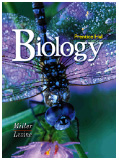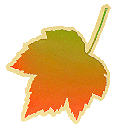BIOLOGY
by Miller & Levine
[complete Table of Contents]

|
Use the pull-down menu to jump to any of the Book's 40 Chapters: |
Additional Resources:

A Unique Resource: The USDA Plants Database.
Type in
the common name of any plant, and this site will give you photos, scientific
names, and detailed information.

The
American Fern Society
(Yes, there
is one, and it has a great web site!)
The
Plants of Texas
(A complete list of the vascular plants of Texas)
Monocots
vs. Dicots
What's the difference? It might not be as clearcut as you thought!

In this chapter, students will read about the origin of plants and the major characteristics that distinguish plants from other organisms. They will also read about the differences among bryophytes, ferns, gymnosperms, and angiosperms in reproduction and internal transport systems. The links below lead to additional resources to help you with this chapter. These include Hot Links to Web sites related to the topics in this chapter, the Take It to the Net activities referred to in your textbook, a Self-Test you can use to test your knowledge of this chapter, and Teaching Links that instructors may find useful for their students.
| Hot Links | |
| Take it to the Net | Teaching Links |
What are Web Codes? |
Web
Codes for Chapter 22: |
![]()
Section
22-1: Introduction to Plants
![]() Plants are multicellular
eukaryotes that have cell walls made of cellulose. They develop from multicellular
embryos and carry out photosynthesis using the green pigments chlorophyll
a and b.
Plants are multicellular
eukaryotes that have cell walls made of cellulose. They develop from multicellular
embryos and carry out photosynthesis using the green pigments chlorophyll
a and b.
 The lives of plants revolve around the
need for sunlight, water and minerals, gas exchange, and the movement
of water and nutrients throughout the plant body.
The lives of plants revolve around the
need for sunlight, water and minerals, gas exchange, and the movement
of water and nutrients throughout the plant body.
 The first plants evolved from an organism
much like the multicellular green algae living today.
The first plants evolved from an organism
much like the multicellular green algae living today.
Section
22-2: Bryophytes
 Bryophytes have life cycles that depend
on water for reproduction. Lacking vascular tissue, these plants can draw
up water by osmosis only a few centimeters above the ground.
Bryophytes have life cycles that depend
on water for reproduction. Lacking vascular tissue, these plants can draw
up water by osmosis only a few centimeters above the ground.
 Bryophytes include mosses, liverworts,
and hornworts.
Bryophytes include mosses, liverworts,
and hornworts.
In bryophytes, the gametophyte is the dominant, recognizable stage of
the life cycle and is the stage that carries out most of the plant's photosynthesis.
Section
22-3: Seedless Vascular Plants
 Both forms of vascular tissue—xylem
and phloem—can move fluids throughout the plant body, even against
the force of gravity.
Both forms of vascular tissue—xylem
and phloem—can move fluids throughout the plant body, even against
the force of gravity.
 Seedless vascular plants include club
mosses, horsetails, and ferns.
Seedless vascular plants include club
mosses, horsetails, and ferns.
 Ferns and other vascular plants have
a life cycle in which the diploid sporophyte is the dominant stage.
Ferns and other vascular plants have
a life cycle in which the diploid sporophyte is the dominant stage.
Section
22-4: Seed Plants
 Adaptations that allow seed plants to
reproduce in areas without water include flowers or cones, the transfer
of sperm by pollination, and the protection of embryos in seeds.
Adaptations that allow seed plants to
reproduce in areas without water include flowers or cones, the transfer
of sperm by pollination, and the protection of embryos in seeds.
 Gymnosperms include gnetophytes, cycads,
ginkgoes, and conifers.
Gymnosperms include gnetophytes, cycads,
ginkgoes, and conifers.
Section
22-5: Angiosperms—Flowering Plants
 Angiosperms have unique reproductive
organs known as flowers. Flowers contain ovaries, which surround and protect
the seeds.
Angiosperms have unique reproductive
organs known as flowers. Flowers contain ovaries, which surround and protect
the seeds.
 Monocots and dicots are named for the
number of seed leaves, or cotyledons, in the plant embryo. Monocots have
one seed leaf, and dicots have two.
Monocots and dicots are named for the
number of seed leaves, or cotyledons, in the plant embryo. Monocots have
one seed leaf, and dicots have two.
 There are three categories of plant life
spans: annual, biennial, and perennial.
There are three categories of plant life
spans: annual, biennial, and perennial.